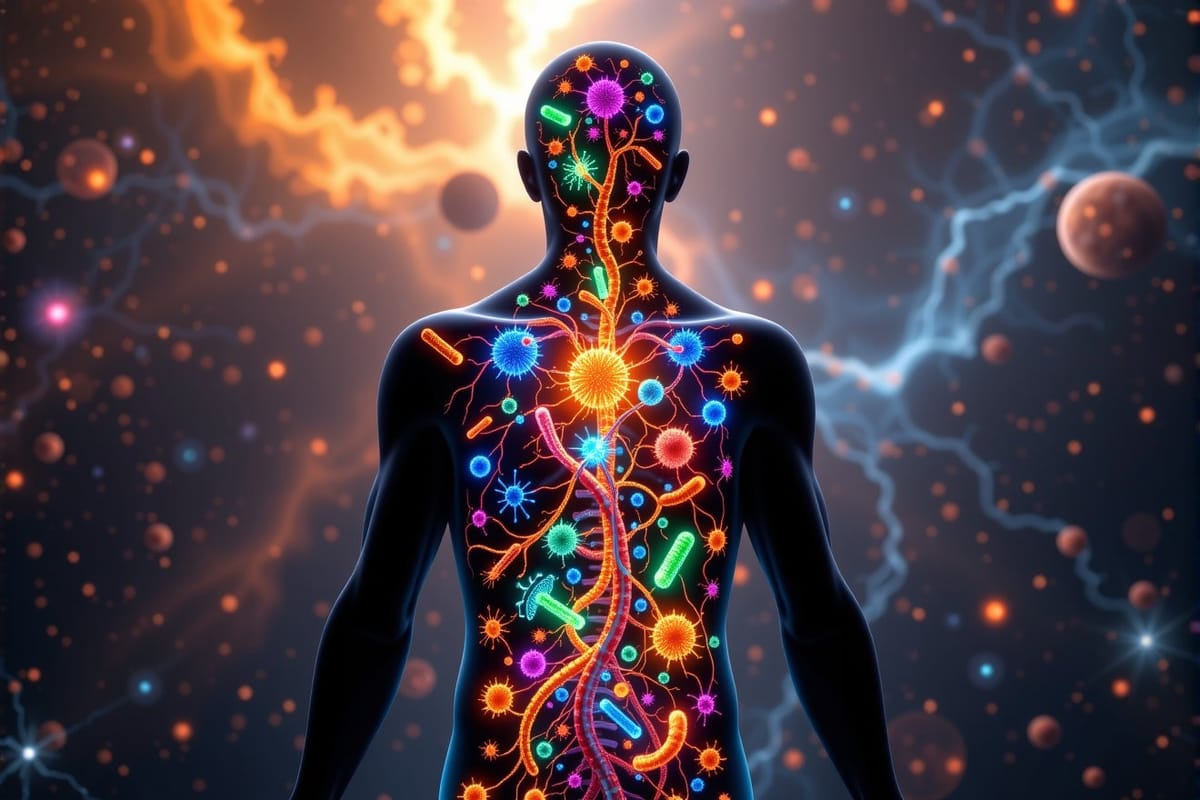
The Future of Longevity: Expert Insights with Dr. John Thomson Smith MBChB FRCS
Dr. John Thomson Smith MBChB FRCS is a leading medical advisor, MedTech consultant, and surgeon with over 20 years of experience in global healthcare, life sciences, and medical devices. With a first-class honors degree in Medicine and Surgery, he has performed over 7,500 registered operations and has 22 years of direct clinical experience. Currently, he serves as a senior medical advisor at Rejuve.AI, pioneering AI-driven longevity research through a decentralized data platform. Beyond medicine, John is an avid cyclist, triathlete, and longevity advocate, passionate about healthy lifestyle coaching, nutrition, and optimizing human performance.
Understanding Biological Age
1. Biological Age vs. Chronological Age: Why It’s a Game-Changer
Biological age measures an individual’s physical and functional health compared to age-related norms, rather than the number of years since birth. It considers factors such as cellular health, tissue integrity, and organ function, influenced by genetics, lifestyle, environment, and chronic conditions. Cutting-edge techniques like epigenetic clocks (DNA methylation patterns) and molecular biomarkers help estimate biological age, offering personalized insights into aging. A lower biological age suggests better health and longevity, while a higher biological age signals the need for preventive interventions. The shift from chronological age to biological age is revolutionizing personalized healthcare, enabling early disease risk detection and longevity tracking.
2. Breakthroughs in Biological Age Testing: The Future of Personalized Health
Advancements in biological age testing have dramatically improved accuracy, accessibility, and real-time monitoring. Key innovations include:
- Epigenetic Clocks: AI-driven models now analyze DNA methylation patterns with improved precision. Non-invasive tests like CheekAge use cheek swabs to estimate biological age, making testing easier than ever.
- AI-Powered Biometrics: Machine learning now integrates facial analysis, blood markers, and wearable data to assess biological age.
- Omics Integration: Advances in genomics, proteomics, and metabolomics allow for comprehensive aging profiles, identifying individual risk factors.
- Wearable Longevity Tech: At Rejuve.AI, real-time biological age tracking is being integrated into user-friendly apps, allowing individuals to monitor lifestyle changes and interventions in real-time.
3. Will Biological Age Tracking Become as Common as Step Counting?
Yes! As wearable devices and fitness trackers continue to evolve, monitoring biological age will become as routine as checking heart rate or daily steps. Non-invasive testing, combined with AI-driven analytics, will allow people to track their longevity progress, turning biological age into an everyday health metric.
Optimizing Longevity: Personalized Health Strategies
4. Why Knowing Your Biological Age Motivates Better Health Choices
Biological age is a powerful motivator because it provides a personalized snapshot of overall health. Unlike traditional metrics like BMI or blood pressure, biological age integrates multiple factors into a single, actionable number. A higher biological age can be a wake-up call, while a lower biological age can reinforce positive habits, encouraging long-term health commitment.
5. How to Improve Biological Age in 30, 60, or 90 Days
To reverse accelerated aging, focus on these four core areas:
- Nutrition: Follow an anti-inflammatory diet rich in whole foods, antioxidants, and healthy fats. Consider time-restricted eating (8-10 hours) for improved blood sugar control and mitochondrial function.
- Exercise: Engage in aerobic, resistance, and high-intensity interval training (HIIT) to improve cardiovascular health and DNA repair. VO2 max and muscle strength can show significant gains within 60-90 days.
- Sleep: Prioritize 7-9 hours of quality sleep, maintain a consistent schedule, and improve sleep hygiene to regulate stress hormones and boost immune function.
- Stress Management: Reduce cortisol and inflammation with meditation, breathwork, and social connections. Strong relationships enhance mental health and longevity. Avoiding aging accelerators like smoking, excessive alcohol, and chronic stress can drastically lower biological age in just 90 days.
Real-World Impact: Longevity Success Stories
6. Reframing New Year’s Resolutions with Biological Age Data
Unlike traditional resolutions like weight loss, biological age improvements provide real-time motivation. Tracking biological age allows people to see progress instantly, reinforcing sustainable health habits.
7. Inspiring Case Study: Reversing Biological Age
A compelling example is Julie Gibson Clark, a 55-year-old woman who reduced her biological age to 35—outperforming tech mogul Bryan Johnson in the Rejuvenation Olympics. On a budget of just $12/day, she achieved longevity gains with a vegetable-rich diet, strength training, meditation, and sauna therapy. This case proves that longevity isn't just for the wealthy—it’s accessible to anyone with the right habits.
8. How Seeing Biological Age Data Changes Mindsets
Many individuals are shocked when their biological age is higher than expected, even if they appear healthy. Conversely, those who have made positive lifestyle changes often see immediate validation in their results. Understanding that biological age is reversible empowers people to take proactive control of their health.
9. Using Biological Age Data for Personalized Health Roadmaps
Healthcare professionals can design custom longevity plans using biological age data, focusing on:
- Inflammation Reduction: Addressing chronic inflammation with diet and stress management.
- Metabolic Health: Improving insulin sensitivity and cardiovascular fitness.
- Lifestyle Optimization: Tracking biomarkers via wearables to refine interventions in real time.
The Future of Biological Age Testing
10. What’s Next for Biological Age Testing?
The next decade will see biological age tracking become more precise, accessible, and integrated into daily life:
- Wearables & AI Integration: Continuous real-time tracking through smartwatches and apps.
- Improved Machine Learning Models: AI-driven data analysis will enhance accuracy and personalization.
- Affordability & Accessibility: Costs will decrease, making biological age testing mainstream in routine healthcare.
- Preventive Healthcare Adoption: Governments may promote biological age tracking to prevent chronic diseases.
11. How Biological Age Tracking Will Reshape Wellness
By 2035, biological age monitoring could become as routine as heart rate tracking, shifting the focus from treating disease to preventing it. Healthcare professionals will prescribe lifestyle changes based on biological age, making longevity science a public health priority.
12. Overcoming Challenges in Longevity Innovation
Key challenges include:
- Accuracy & Standardization: Ensuring consistent test results across diverse populations.
- Data Privacy & Ethics: Addressing concerns over GDPR compliance and insurance implications.
- Healthcare Accessibility: Making longevity science available to all income levels.
Final Thoughts: Your 2025 Longevity Tip
For a longer, healthier life, set realistic goals to take control of your biological age and healthspan!






Comments